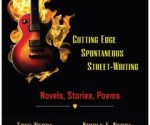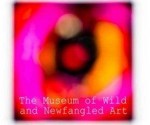Illustrator and Cartoonist Mike Tofanelli Discusses his Work
 Wholly turned on by his recent Warriors cover for The Village Voice, looking into all artist Mike Tofanelli has managed over his career you will be as gobsmacked as I was by the man’s caricature talent as the subjects he has taken on. Amassing an impressive client list that includes not only The Village Voice, but Rolling Stone, Major League Baseball, Entertainment Weekly, Sports Illustrated, and AT&T among many others, Mr. Tofanelli is a premier artist working today. I was lucky enough to get a sit down with this busy artist and learn about his world and work.
Wholly turned on by his recent Warriors cover for The Village Voice, looking into all artist Mike Tofanelli has managed over his career you will be as gobsmacked as I was by the man’s caricature talent as the subjects he has taken on. Amassing an impressive client list that includes not only The Village Voice, but Rolling Stone, Major League Baseball, Entertainment Weekly, Sports Illustrated, and AT&T among many others, Mr. Tofanelli is a premier artist working today. I was lucky enough to get a sit down with this busy artist and learn about his world and work.
In your opinion, what makes a good caricature?
Well, besides the obvious requirement of a good likeness, a good caricature goes further and captures the subject’s personality and essence. It makes a statement about the subject more than a photo can. A good caricature should evoke a “Wow! That’s SO him/her!” reaction from the viewer–whether they actually say that or not isn’t important, but the feeling is what I’m talking about. I like to think of it as a short cut to the truth–in a fun and imaginative way.
How much of your working day is taken up illustrating and how much working on caricature and do you see the two disciplines as different or all part of what you do?
This completely depends on my workload and deadlines. I find the two disciplines have blended together more and more the further I go in my career, and that is probably because I have become more focused on my artistic direction the older I get–I’ve honed in on what I love to do most, which is caricature based illustration. Even if I’m not caricaturing a specific personality; people in general, objects and environments I illustrate pass through my “filter” and become caricatured reality. I am also a party and event caricaturist and I find that spontaneous live drawing invigorates and feeds into my more methodical illustration work.
At this stage of your career, do clients come seeking you out, do you work through an agent, do you hear of some new cool article, etc. and think “Hey I have a great idea for a picture for that”…or all of the above?
Some of the above. Clients contact me for assignments they find me suited to, but I often must remind them that I’m out there working, either by sending out promotion in the form of an email campaign or postcard mailer, or the best method of all, if we can all be so lucky, is to do high profile assignments that get seen by the masses including art directors. Self-promotion is a constant, I believe, no matter what stage one is at in their career. Keeping my website up to date and maintaining my online presence is also important.
Typically I do not pitch a concept to an art director unsolicited, however, one proactive way for me to send a hint to art directors is to create a personal illustration based on a hot topic and show it off, hoping to get an assignment pertaining to that subject. For example I have a few Trump concepts on my drawing board, we’ll see if I can finish one of them up. Creating personal, non-commissioned work (when my schedule allows) has always been important for me as it helps to bring in the kind of work I want to do.
I read some of your influences were Mad Magazine, and T.V, cartoons. Can you tell us a few favorites that shaped your view point and art?
The cartoons that stoked my creativity were old Popeye’s from the 30′-50’s, and Warner Bros. cartoons-Bugs Bunny in particular-from the 40’s and 50’s as well as the Tex Avery MGM shorts from the same era, those were gold to me.
And yes, Mad magazine from the late 60’s and early 70’s had a huge influence on my artistic development and tastes. The art was fantastic. I especially loved Jack Davis and Mort Drucker. And the writing helped shape my sense of humor and satire, it gave me a green light to poke fun at stuff as long as I was clever about it. My illustrations tend to embody a visual sense of humor and I can attribute a lot of that to these early influences.
I would be remiss not to mention a book of Al Hirschfeld theater drawings I looked at as a teenager. I was enthralled by his distilled, remarkably accurate likenesses and his deft sense of rhythm and design. The work of Hirschfeld more than anyone else, had a profound influence on my outlook and development as a caricaturist.
Have you found any recent celebrity so difficult to sketch you had to say no to an assignment?
Actually no, because if I’m struggling with a likeness, that means I’ve already accepted the job and it’s too late to back out, (he laughs)! Certainly some faces are more elusive to capture than others, but I’ve found the biggest reason for struggling with a likeness is I haven’t made a solid decision on what elements of the face I want to exploit or what attitude I want to convey. It’s a perception thing-or lack of- more than anything else I think, however low-res or crummy photo reference can lead to struggling too. I have never turned down a job based on perceived difficulty of any person.
Are there any subjects/people you simply do not like to sketch?
Yes. If someone wanted me to illustrate vulgar or hateful matter I would turn them down.
What’s coming up for you in the near future?
I will continue to do the kind of work I love, however I know that I must always be evolving, improving my craft and expanding my vision. Because the magazine illustration field has been ever dwindling for some time now, I know that I will need to continuously seek out alternative markets and opportunity for my work. Perhaps more gallery work–we’ll see.
Find out more about Mike Tofanelli’s work here: http://www.miketofanelli.com/










